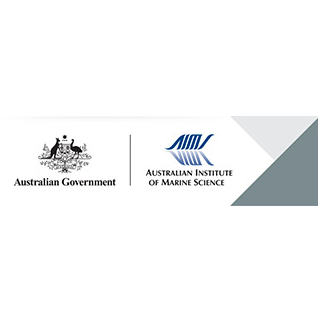Full description
Baited remote underwater video stations (BRUVS (TM)) were deployed to census deep water fish communities (30-70 m) at 19 sites in South Scott Reef lagoon in November and December 1999. The sites were selected to cover nominally representative habitat types and depth contours across 6 regions of South Scott Reef lagoon. These regions, were East Hook Entrance, East Hook, East Lagoon, Central Lagoon, South Lagoon and West Lagoon. A total of 112 deployments were made along three transects running outward from the centre of South Scott Reef lagoon to both East Hook and West Hook and to the southern shallow region, as well as along the drop-off at the entrance to the lagoon. Six BRUVS (TM) were deployed at each site, at similar depths, separated by intervals of approximately 150 m. A GPS fix was taken for all BRUVS (TM) deployed. Each BRUVS (TM) was lowered to the seafloor, with an attached rope and surface float marking its position, enabling recovery later in the day. Normal daily operations were to deploy all six units in one site during the morning, followed by a second deployment at a new site in the afternoon. As a test, on one occasion, two BRUVS (TM) were deployed at night with underwater torches attached for illumination. Each BRUVS (TM) recorded onto a 90 minute Hi-8 video tape until the tape was full. The deployed units were recovered after the maximum recording time and generally within 4 hours of deployment. Tapes were scanned on a Sony Trinitron 14 inch Monitor using a Sony Video Hi-8 Cassette Recorder with a Sony Control Unit editing deck. This allowed fast-forward, play-back, zoom X2 and freeze to enable definitive species identifications, and to speed data collection. Data collected from each tape included a brief description of the seabed topography and benthic community, a species name, the time (hr:min:sec) of first sighting of the individual species, the species activities/behaviours (in 6 categories) in the field of view, the time that an individual species began to feed at the bait canister and/or the time at which the most number of individuals was active in the field of view, and the maximum number of each species sighted simultaneously in any one field of view. These data were initially entered into a Microsoft Excel spreadsheet.This study was undertaken to determine species richness and diversity of fishes, sharks, rays and sea snakes below the limits of safe SCUBA diving in South Scott Reef lagoon, using baited remote underwater video stations (BRUVS (TM)).BRUVS (TM) data was used in combination with benthic community data derived from surveys with television recordings from a remotely operated vehicle (ROV) to provide;1. a statistical clustering by similar fish communities of the different habitats and regions in the South Scott Reef lagoon and2. a measure of association between fish communities and broad habitat classifications.
This study was part of a more extensive survey of North Scott Reef lagoon and South Scott Reef lagoon, "Characterisation of Scott Reef lagoon biota - fish and macrobenthos" carried out during November and December, 1999. Work in North Scott Reef lagoon focused on shallow water benthic communities, which were sampled by the divers using hand-held underwater video cameras. Sampling in South Scott Reef lagoon used more diverse methods and focused on not only the benthic communities but the demersal fish communities as well. In South Scott Reef lagoon the benthic communities were sampled using divers, ROVs and grabs, while fish communities were sampled using deployed baited remote underwater video stations (BRUVS (TM)).
Lineage
Maintenance and Update Frequency: asNeededNotes
CreditCappo, Michael (Mike), Dr (Principal Investigator)
Cappo, Michael (Mike), Dr (Point Of Contact)
Modified: 22 08 2025
text: westlimit=121.763003; southlimit=-14.183483; eastlimit=121.952264; northlimit=-14.028215
Potential of video techniques to design and monitor diversity, abundance and size of fish in studies of Marine Protected Areas: Cappo M, Harvey ES, Malcolm HA and Speare PJ (2003) Potential of video techniques to monitor diversity, abundance and size of fish in studies of Marine Protected Areas. pp. 455-464. In: Beumer JP, Grant A and Smith DC (eds) Aquatic Protected Areas - what works best and how do we know? World Congress on Aquatic Protected Areas proceedings, Cairns, Australia, August 2002. Australian Society of Fish Biology.
local : articleId=6725
Direct sensing of the size frequency and abundance of target and non-target fauna in Australian fisheries - a national workshop, 4-7 September 2000, Rottnest Island, Western Australia: Harvey ES and Cappo M (2001) Direct sensing of the size frequency and abundance of target and non-target fauna in Australian fisheries - a national workshop, 4-7 September 2000, Rottnest Island, Western Australia. Fisheries Research and Development Corporation. 187 p.
local : articleId=6140
- global : 3bca7810-60c9-11dc-9ca3-00008a07204e
- URI : eatlas.org.au/data/uuid/3bca7810-60c9-11dc-9ca3-00008a07204e



